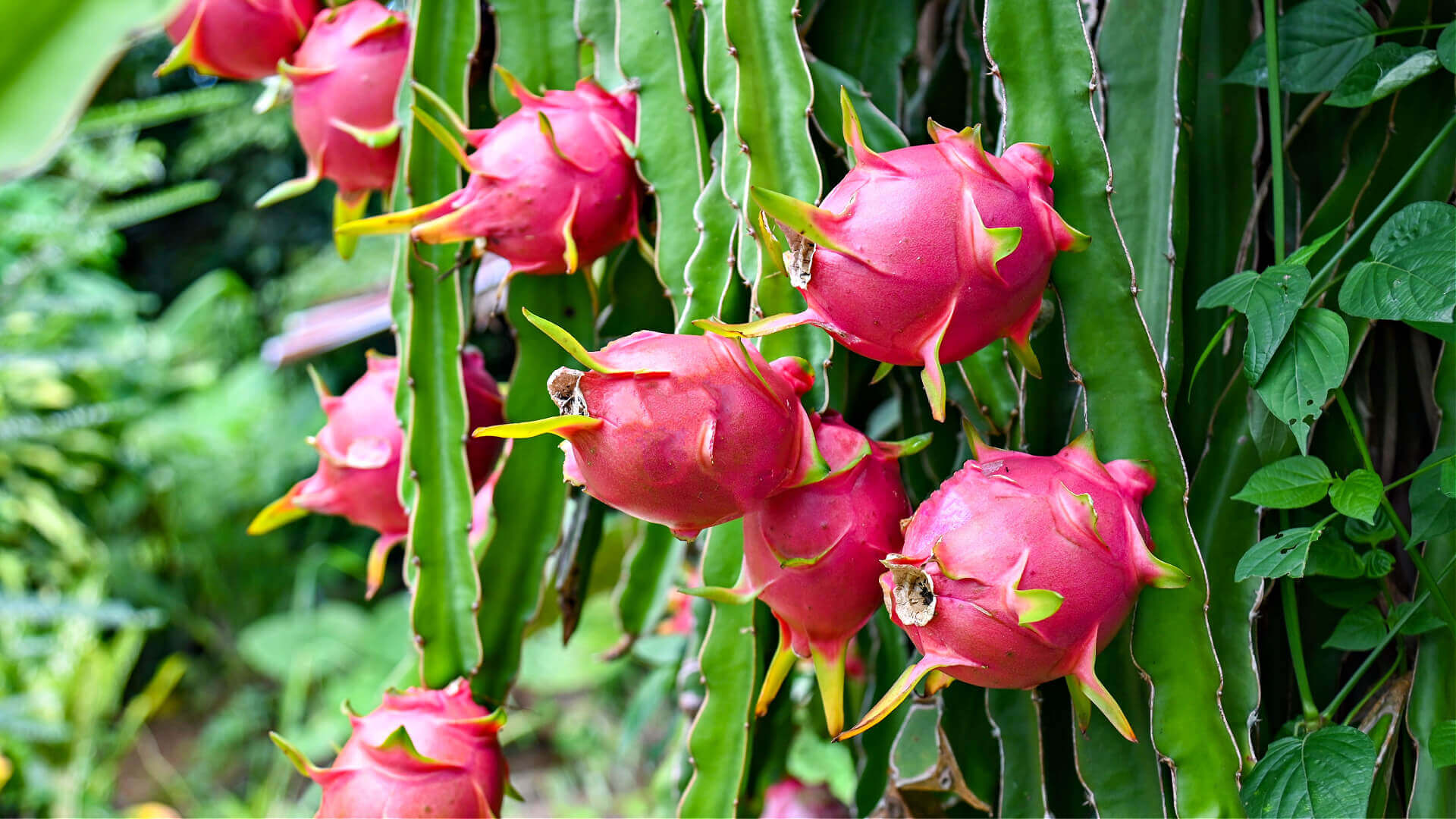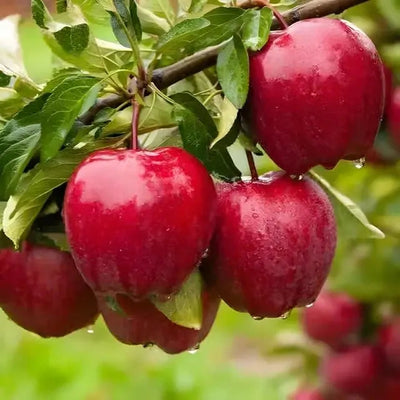Growing Your Own Fruit Trees
Growing fruits by cultivating fruit trees is rewarding and environmentally beneficial. It allows you to enjoy fresh, organic fruits from your garden while contributing to the local ecosystem. This comprehensive guide will cover the various aspects of fruit tree care and maintenance, ensuring fruit trees thrive and produce bountiful harvests.
Understanding Fruit Trees
Before planting fruit trees, it's essential to understand their needs and growth patterns. Different species have varying climate, soil, sunlight, and space requirements. Researching the specific needs of the fruit trees you intend to plant is crucial for their success.
Climate and Soil
Different fruit trees thrive in other climates. For instance, apple trees prefer cooler temperatures, while citrus trees need warmer conditions. Additionally, soil quality and pH levels significantly impact the growth of fruit trees. Most fruit trees prefer well-draining soil with a neutral to slightly acidic pH.
Sunlight and Space
Fruit trees generally need full sunlight to produce the best yield. Ensure your chosen planting site receives at least six hours of direct sunlight daily. Spacing is another critical factor. Trees need enough room to grow without competing for nutrients, sunlight, and water.

Planting Fruit Trees
The first stage in growing fruit trees is proper planting. The best time to plant is typically in late winter or early spring, depending on the climate.
Choosing the Right Trees
Selecting healthy, disease-resistant varieties suited to your local climate is essential. Consider starting with young trees from a reputable nursery. These trees are more accessible to establish and often begin producing fruit sooner than those grown from seed.
Planting Procedure
When sowing, dig a hole double as wide as the root but no deeper. This allows the roots to spread quickly. Place the tree in the hole, ensuring that the graft union (if present) is above ground level. Fill the void with soil and water deeply.
Watering and Mulching
Frequent watering is essential, especially during the first months of a tree's life. The dirt should be kept moist but not saturated. Mulching helps retain soil moisture, regulate temperature, and reduce weed competition.
Watering Schedule
Young trees need more regular watering than established ones. In the absence of rain, water deeply once a week. Adjust the plan based on weather situations and soil type.
Mulching
Apply a layer of mulch around the tree's base, extending to the drip line. Dodge stacking mulch against the trunk, as this can lead to rot.
Fertilization
Fruit trees require different nutrients at various stages of their growth. Using the right type and amount of fertilizer is essential for healthy development and fruit production.
Type of Fertilizer
A balanced, slow-release fertilizer is typically recommended. Organic options like compost or manure can also be beneficial. Some trees may require specific nutrients, such as additional nitrogen or iron.
Fertilization Schedule
Fertilize in early spring and again in late spring or early summer, following the manufacturer's instructions. Avoid over-fertilizing, as this can harm the tree and reduce fruit quality.

Pruning
Pruning is vital for the health and productivity of fruit trees. It helps shape the tree, encourages healthy growth, and improves fruit quality.
Pruning Techniques
Pruning aims to remove dead or diseased wood, thin out crowded branches, and open up the canopy for better light penetration. The best time to prune is during the dormant season, although some summer pruning can benefit certain species.
Training Young Fruit Trees
Training young trees into the desired shape early on is easier and more effective than correcting growth patterns later.
Pest and Disease Management
Fruit trees are susceptible to various pests and diseases, affecting their health and fruit production.
Integrated Pest Management
Integrated Pest Management (I.P.M.) involves monitoring for pests and diseases and using a combination of cultural, biological, and chemical controls as needed. This approach minimizes the use of pesticides while effectively managing problems.
Common Pests and Diseases
Common issues include aphids, caterpillars, apple scab, and citrus greening. Identify the specific problems in your area and learn how to manage them effectively.
Harvesting
The reward for all your hard work is the harvest. Knowing when and how to harvest your fruit ensures the best quality and flavor.
Harvest Timing
Different fruits have different indicators of ripeness, such as color change, ease of separation from the tree, and taste. Monitor your fruits closely as the harvest season approaches.

Harvesting Techniques
Handle the fruit gently to avoid bruising. For more giant trees, a fruit picker can be helpful. Store harvested fruit properly to maximize its shelf life.
Winter Care
Preparing your fruit trees for winter is crucial for their survival and productivity in colder climates.
Protecting the Roots
Mulching around the tree's base helps insulate the roots from freezing temperatures. Be sure to remove the mulch in spring to prevent rot.
Preventing Rodent Damage
Rodents can damage trees by chewing on bark and roots. Use tree guards or other protective measures to prevent this.
Long-term Maintenance
Ongoing care is essential for the health and productivity of your fruit trees.
Monitoring Tree Health
Regularly inspect your trees for signs of stress, pests, or diseases. Early detection and intervention can prevent more significant problems.
Soil Health
Maintaining healthy soil is vital. Periodic testing can reveal nutrient deficiencies or pH imbalances that must be addressed.
Renewal Pruning
As trees age, renewal pruning can invigorate growth and improve fruit production.
Challenges and Solutions
Growing fruit trees is challenging. Adverse weather, diseases, pests, and soil issues can all impact your trees. Being prepared to address these challenges is critical to maintaining a healthy orchard.
Environmental Considerations
Fruit trees can positively impact the environment by providing habitat for wildlife, sequestering carbon, and reducing the carbon footprint associated with transporting store-bought fruits.
Personal Satisfaction
Growing your fruits brings a sense of accomplishment and connection to nature. There's a unique satisfaction in nurturing a tree and enjoying the fruits of your labor.

Community and Sharing
Sharing your harvest with friends, family, and community members fosters connections and can inspire others to start their fruit-growing journey.
The Easiest Fruit Trees to Grow
Here are some hardy fruit trees that require minimal maintenance and resist common diseases and pests. Apple trees are a popular choice, known for their hardiness and the variety of types available. They can adapt to various climates and soil types, although they do best in well-draining soil and full sun.
Fig trees are another low-maintenance option, thriving in warmer climates and requiring little pruning. Peach trees are also a favorite among home gardeners for their sweet fruit and adaptability, though they need some attention to prevent disease. Plum trees are known for their hardiness and ability to thrive in various soil types, making them an excellent choice for beginners. These trees provide delicious fruits and enhance the garden's aesthetic appeal.
In conclusion, growing your fruit trees is a fulfilling endeavor that requires knowledge, patience, and care. By understanding your trees' needs, providing them with the right conditions and maintenance, and addressing any challenges that arise, you can enjoy a healthy and productive orchard. The benefits of home-grown fruits extend beyond the delicious harvest; they include environmental contributions, personal satisfaction, and the joy of sharing with others. Whether you're a seasoned gardener or a beginner, the journey of growing fruit trees offers a rewarding experience and a deeper appreciation for nature's bounty.




